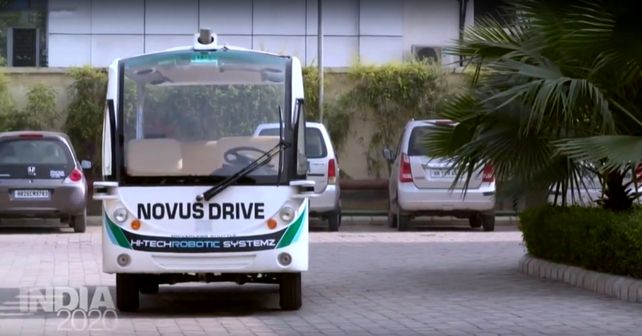
Autonomous vehicles, the buzz is happening and while it is considered good to experiment with vehicles, the technology is progressing to have advanced driver assist systems to increase personal safety and minimise accidents on roads, but are we really ready, say, even for a minimal adoption?
“India is fourth largest autonomous car market, China being first followed by North America and speaking of mass adoption, currently, I believe there is a chicken and egg situation in India because unless there will be large scale adoption, technology will not be cheaper and if it is not cheaper it can never reach a mass scale adoption,” Ritukar Vijay, Head of Autonomous Technologies & Business Strategy, Hi-Tech Robotic Systemz Limited (HRS), told autoX.
HRS designs and develops artificial intelligence and autonomous driver assistive systems (ADAS) for commercial / passenger vehicles (trucks, busses, cars, etc.), and has a market share of over 90 per cent in India.
The company has developed “Novus Drive,” a full stack software for autonomous driving which takes input from various sensors including a primary perception indigenous sensor “Novus Pilot” and performs automated driving under constraint environments, city roads and highways.
Driver-assist systems developed by HRS provide audible alerts if they sense a potentially dangerous situation, and some can even take action such as applying the brakes to avoid a collision or steering a car back into its lane.
“However, any ADAS systems developed by us will not be able to deliver efficiently unless infrastructure is changed or our driving habits. The way we think while driving is not same, lane cutting is common in Indian roads, different type of obstacles can come up, thus cross road coverage is necessary. For our systems to be safe and work smoothly we have analysed over two million images and video feeds and these above scenarios to learn from the Indian roads,” Vijay emphasized.
HRS has products right from L0 to L4 autonomy. L0 represents automated system issues warnings but has no vehicle control; Level 1 (”hands on”) means driver and automated system shares control over the vehicle; in L2 automated system takes full control of the vehicle (accelerating, braking, and steering); in L3 autonomy, the driver can safely turn their attention away from the driving tasks, e.g. the driver can text or watch a movie. In 2017, the Audi A8 Luxury Sedan was the first commercial car to claim to be able to do level 3 self-driving.
While in L4 self-driving is supported under special circumstances, like traffic jams, no human intervention is required in Level 5, for example a robotic taxi.
“India is still a decade away to be ready for a L4 autonomous vehicle, the good part being if anybody is born in 2017, will not require a driver licence by 2035 which is something that can be possible,” Vijay noted.
While the Autonomous Driver Assistive Systems (ADAS) systems represent serious advantages, including increased personal safety, less environmental harm, and reduced transportation costs, the bitter reality is that the impact of autonomous vehicles have less to do with technology but more with how proactively government and we as end users are efficient in embracing that technology.
According to a report from management consulting firm McKinsey, the autonomous technology will lead to drastic shifts in value chains, profit pools, and needed capabilities (for example, software expertise or cybersecurity) that could introduce entirely new industries within automotive. McKinsey expects Level 4 autonomy -- operating within virtual geographic boundaries -- to be disruptive and available between 2020 and 2022, with full adoption coming later.
“By 2020, L2 or L3 vehicles will be in the Indian market. One of our ADAS product will be mainstream in the first quarter of 2018,” Vijay said, adding that each year there will be incremental updates in terms of adding autonomy to it, for example, warning today and a year later there can be driver assist systems.
Full autonomy with Level 5 is projected to arrive by 2030. The advances that ADAS will bring will change the way people think about mobility in urban environments, but will also be largely dependent on how we adjust our driving habits with laws.



















Write your Comment